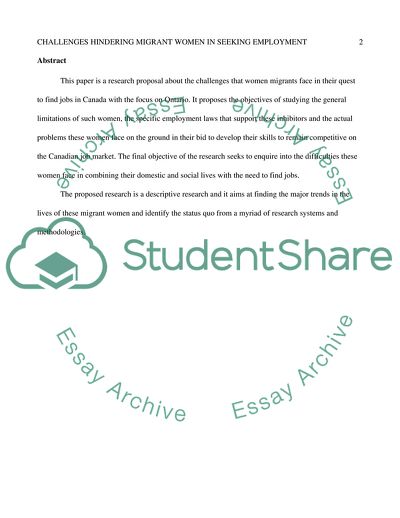Cite this document
(Challenges Faced by Immigrant Women in Canada Research Proposal, n.d.)
Challenges Faced by Immigrant Women in Canada Research Proposal. https://studentshare.org/gender-sexual-studies/1761859-the-challenges-hindering-immigrant-women-from-finding-employment-in-canadaontario
Challenges Faced by Immigrant Women in Canada Research Proposal. https://studentshare.org/gender-sexual-studies/1761859-the-challenges-hindering-immigrant-women-from-finding-employment-in-canadaontario
(Challenges Faced by Immigrant Women in Canada Research Proposal)
Challenges Faced by Immigrant Women in Canada Research Proposal. https://studentshare.org/gender-sexual-studies/1761859-the-challenges-hindering-immigrant-women-from-finding-employment-in-canadaontario.
Challenges Faced by Immigrant Women in Canada Research Proposal. https://studentshare.org/gender-sexual-studies/1761859-the-challenges-hindering-immigrant-women-from-finding-employment-in-canadaontario.
“Challenges Faced by Immigrant Women in Canada Research Proposal”. https://studentshare.org/gender-sexual-studies/1761859-the-challenges-hindering-immigrant-women-from-finding-employment-in-canadaontario.


